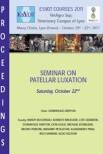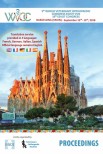Objective—To evaluate whether pedal bacteremia develops following regional IV perfusion (RIVP) of a 2% lidocaine hydrochloride solution in cattle with deep digital sepsis (DDS) and to determine which bacterial pathogens are most commonly isolated from the pedal circulation. Design—Prospective observational cohort study. Animals—9 adult cattle with DDS in 10 limbs and 10 healthy adult cattle with no evidence of lameness or digital infection. Procedures—Blood samples were obtained aseptically from the dorsal common digital vein immediately following tourniquet application and 30 to 60 minutes after aseptic RIVP with a 2% lidocaine solution. Aerobic and anaerobic bacterial cultures were performed on all samples collected. For cattle with DDS, clinical examination with or without debridement of digital lesions was performed after RIVP. Results—Bacteria were isolated from pedal blood prior to RIVP in 1 cow with DDS and after RIVP and examination with or without debridement in that cow and 4 additional cattle with DDS. Bacteria were not isolated from any blood sample obtained from the healthy cattle. Of the 8 bacterial isolates identified, 5 were gram-positive facultative anaerobes. Cattle with DDS were significantly more likely to develop bacteremia in the pedal circulation than were healthy cattle following RIVP. Conclusions and Clinical Relevance—Results indicated that bacteremia may be present in the pedal circulation before and following RIVP and examination with or without debridement in cattle with DDS. Thus, systemic or local antimicrobial treatment might be warranted prior to or concurrently with RIVP in cattle with DDS.
Bacteremia in the pedal circulation following regional intravenous perfusion of a 2% lidocaine solution in cattle with deep digital sepsis
Date
September 1 2014
Journal
Journal of the American Veterinary Medical Association
Volume
245
Number
5
Pages
565-570









